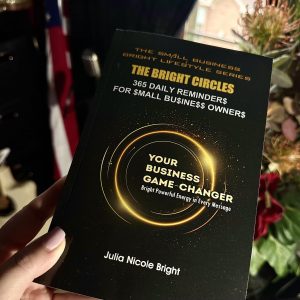 Julia Nicole Bright, entrepreneur, Contributor
Julia Nicole Bright, entrepreneur, Contributor
Updated August, 31 2024
When we think about the youngest members of our family, we often picture cuddly, soft toys they sleep with, hug, and chew on at every opportunity. But what if we looked at toys for infants not just as cute companions but as their first teachers and guides into the world of logic and creativity?
In the old days, mothers used to sew fabric books for their little ones, with each page featuring various items made from everyday materials—bits of cloth, buttons, ribbons, and laces. These books were simple yet filled with love and care. Mothers understood that children learn about the world through play, and each page of these books told a unique story, teaching simple but important lessons.
Today, we continue this tradition, blending age-old craftsmanship with modern developmental techniques. Our fabric books have become more intricate and engaging, yet they are still based on the same principle: every touch and action reveals something new to the child. These books carry the warmth of the hands that made them, passing down knowledge and wisdom through generations.
Fabric books are no longer just toys, but interactive learning tools for the youngest learners. Each page of these books is a small world with its own rules, which the child discovers gradually as they flip through and explore. For instance, pages might contain buttons to fasten, laces to tie, zippers to unzip, clothing items to place in a closet, or food items to put in a fridge.
To an adult, a button is just a button. But to a child, it’s a whole universe of puzzles and challenges! As those tiny fingers start to practice, trying to solve the task, the brain simultaneously works on a logical problem: “Why won’t this button fasten?” In that moment, the child realizes that actions lead to outcomes and that every solution is another step toward understanding the world.
Laces—let’s be honest: for most adults, tying shoelaces is a routine and often disliked task done automatically. But for a child, it’s a real challenge. It’s not just a way to keep shoes on their feet; it’s a chance to learn coordination, develop finger motor skills, and practice concentration. Every attempt to tie a knot is a creative process! And by the way, there are many ways to tie laces, so teaching your child all of them can be an entertaining activity for days on end.
Success in this task gives the child a sense of accomplishment. But remember, a child’s attention span for a single task is only about 10-15 minutes. Don’t force them to master all the nuances of macramé in one go—have fun together, as the process itself is what’s important. Whether they end up wearing shoes with laces is something time will tell. Plus, with a bit of creativity, you can use ordinary laces to help your child develop their creative thinking by challenging them to use the laces in unconventional ways.
Food in fabric books is also a topic worth discussing. Imagine a page in the book where the child can “place” a fabric apple on a plate. They’re not just playing; they’re learning the concepts of “part and whole” and how objects interact. Some might laugh, but this experience teaches the child the basics of associative thinking. Next time Mom says that apples are healthy, the child will smile, recalling their book, and think, “I know how it fits on the plate.”
As for a child’s first encounters with numbers and letters, fabric books offer an ideal opportunity for them to get to know these abstract concepts through tactile experiences. What could be better than “feeling” a number with their fingers? A soft letter “A” or a number “1” can become a child’s best friend in the early stages of learning the alphabet and math. With their pleasant texture, these elements create a positive first impression that learning new things is both fun and enjoyable.
Now let’s turn to the pages dedicated to morning routines—brushing teeth, washing up, combing hair. A soft toothbrush or a miniature bar of soap helps the child learn the sequence of actions. It’s not just a game; it’s practice for skills that will be important throughout life. The child learns that there is an order to things, and by performing actions in a specific sequence, they achieve a positive result. This is not just memory and logic training but also a crucial step in developing self-discipline.
The incredible thing about these toys is their ability to teach children to see hidden connections between objects. For example, what do a toothbrush and a shoelace have in common? At first glance, nothing. But when a child learns to connect events, objects, and concepts, they begin to understand that everything in this world is connected. Every morning, after brushing their teeth, they must wear clean clothes. This is the foundation of critical thinking—the ability to see and find connections where there seemingly are none.
Children learn to think, analyze, and make decisions through simple yet engaging activities. So, dear parents, don’t underestimate the power of a soft toy with buttons and zippers. With it, you can become a great teacher for your child, helping them understand how the world works.
Should you hurry to stimulate creative thinking in your child? The answer is an unequivocal yes. The modern world demands mental flexibility and the ability to adapt quickly to new conditions. The days of slowly settling into reality are over. Today, success and happiness belong to those who can see hidden opportunities where others see only problems. By fostering creative thinking from an early age, you give your child a powerful start that will help them follow the world and lead it. Your choice today is the foundation for their success tomorrow.
That’s why we’ve introduced this developmental fabric book among the useful products of our brand, THE BRIGHT CIRCLES. It offers not only hours of safe, engaging play for the littlest ones that won’t soon grow boring but also a tool for developing creative thinking in your child.
- The book is made from safe, hypoallergenic materials that won’t irritate your baby’s skin.
- All elements of the book, such as buttons, zippers, and Velcro, are securely fastened and firmly sewn in place.
- All components are large enough and safe for young children.
- The fabrics and other elements contain no toxic dyes.
- The book is easy to wash.
- The book has rounded corners and soft edges to prevent cuts and scratches.
Don’t wait for the Big Holiday Season in December—give your children this developmental book today. Your purchase is not just a toy; it’s an investment in your child’s future. This developmental book will become their first companion on the road to discovery, teaching with a smile and ease. The time spent with this book will not be wasted—every page opens a door to a world of knowledge where little fingers and big ideas find their perfect harmony.
Click the link and choose development and fun. And while the book is safe for your child to play with independently, play along with them. After all, the best gift in a child’s eyes is the one into which you pour your attention and love.


